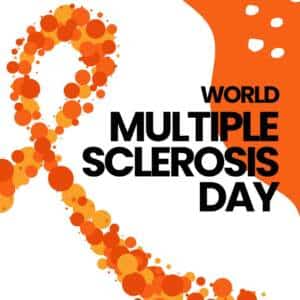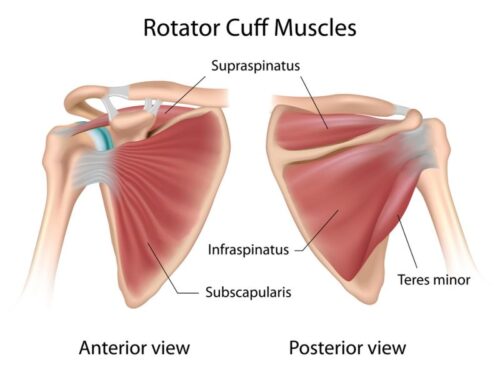
Multiple Sclerosis (MS) is a common chronic neurologic disease that affects many patients worldwide. The disease leaves its victims with disabling physical and mental symptoms, which may interfere with their activities in daily living. The impact of MS on the sufferer is something that cannot be overemphasized. Many people can identify living with MS by learning how to grapple with an illness that has no cure.
Living with MS takes courage, grit, and determination to live one’s life in a way that will not leave one feeling like a victim. The article looks into what MS entails, how it affects people, and ways that can enable those who do suffer from MS to live a fulfilling life. Now, we will really get into the nitty-gritty of the unique challenges of this complex disease and talk about what those who suffer from it can do to empower themselves and build meaningful lives.
This will empower anyone affected by multiple sclerosis, whether directly or indirectly, by helping them learn more about this condition and offering practical advice on how to make life easier. Knowledge is power.
What Is Multiple Sclerosis?
 Multiple sclerosis (MS) is an unpredictable and often disabling disease of the central nervous system. It interrupts the flow of information between the brain, spinal cord and other areas of the body. It is the inflammation and, subsequently, the breakdown of myelin sheaths in the spinal cord and brain. The type of MS someone has depends on which parts of their central nervous system are affected by inflammation and nerve damage.
Multiple sclerosis (MS) is an unpredictable and often disabling disease of the central nervous system. It interrupts the flow of information between the brain, spinal cord and other areas of the body. It is the inflammation and, subsequently, the breakdown of myelin sheaths in the spinal cord and brain. The type of MS someone has depends on which parts of their central nervous system are affected by inflammation and nerve damage.
In MS, the myelin sheath is attacked and destroyed. MS patients can have flare ups and remissions. During flare ups the myelin sheath is replaced by scar tissue, but then during remissions the sheath has a chance to heal and rebuild. However, if the flare ups are too frequent the sheath won’t have a chance to rebuild completely and the damage is more likely to become permanent.
Who Are The People With Multiple Sclerosis?
Signs and symptoms generally begin after the age of 20 years, although the diagnosis may be made at any age. MS affects the white population two times more often than any other race. Grouped diagnoses include at the top are those who had lived in temperate climates before the age of 15 due to lack of sunlight exposure. Young women are twice as likely to get it as young men, but as patients age, it becomes more evenly spread between the genders. Between 300,000 and 350,000 cases exist in the US, and 25,000 new cases are diagnosed yearly.
What Causes Multiple Sclerosis?
The exact cause of MS is not known; however, researchers have identified some contributing factors. The leading theory is that MS is a type of immune system attack. No trigger to the MS attack has been found yet, but HHV-6 and Chlamydia pneumoniae are under investigation for this autoimmune disorder.
Also, a genetic predisposition raises the risk of MS. Studies show that individuals with relatives who had MS are at a very small increased risk of developing MS themselves. Other potential causes may include environmental exposures such as viruses and low levels of vitamin D. Additionally, certain lifestyle choices like smoking tobacco can increase the risk of acquiring MS lesions on brain scans.
very small increased risk of developing MS themselves. Other potential causes may include environmental exposures such as viruses and low levels of vitamin D. Additionally, certain lifestyle choices like smoking tobacco can increase the risk of acquiring MS lesions on brain scans.
Understanding what risks might lead to developing Multiple Sclerosis allows us to take action toward preventing it from occurring or slowing down its progression in those already diagnosed with this debilitating disease.
Signs And Symptoms Of Multiple Sclerosis
Now that we know the possible causes, it’s important to recognize the signs and symptoms of MS. MS usually presents itself through a variety of neurological problems. Many people with MS may experience fatigue, vision difficulties, spasticity or stiffness in their body movements, balance problems, and cognitive impairment. Other symptoms people with multiple sclerosis experience include urologic dysfunction, sexual dysfunction, depression, and digestive problems. Symptoms may vary from person to person and worsen over time due to the progression of the disease.
A common symptom is exacerbated by movement or temperature changes, which can cause relapses or flares in some people with MS. This flare-up of symptoms can last several days up to months at a time. During these episodes, new symptoms may appear while others become worse than usual. It’s also possible for someone with MS to go into remission where they don’t have any major symptoms for long periods of time.
Progression
The progression of multiple sclerosis (MS) largely depends on the type of MS. There are three types of MS: primary progressive, secondary progressive and relapsing-remitting. Primary progressive MS is a steady worsening of neurological function over time with no clear relapses or remissions. Secondary progressive MS starts as relapsing-remitting but then progresses to become steadily more disabling over time. Relapsing-remitting MS is characterized by unpredictable flare-ups when new symptoms appear that can sometimes worsen existing ones.
- Benign MS – only one flare up in this persons lifetime.
- Relapse-remitting multiple sclerosis– Periods of flare ups are followed by periods of remission. It may be years between flare ups. Relapsing forms of MS are most common.
- Secondary progressive multiple sclerosis– There are cycles of flare ups and remissions but there is not enough time to fully heal.
- Primary Progressive MS– Flare ups are mild but constant, never allowing for recovery.
- Malignant MS– Rapid worsening of symptoms, with little recovery between flare ups if any. This is a rare form of MS
Treatment And Prevention Of Multiple Sclerosis
While the progression of multiple sclerosis (MS) is a difficult concept to comprehend, understanding how to treat and prevent it can be just as challenging. Treatment of MS includes medications that are specifically designed for those who have been diagnosed with this condition. The National Multiple Sclerosis Society notes that people with MS may take disease-modifying therapies to slow the advancement of their symptoms, or interferon beta treatments to reduce relapses. Additionally, lifestyle modifications such as regular physical activity can help improve the quality of life for those living with MS.
When it comes to prevention, there are several steps individuals with MS can take in order to minimize their risk of relapse. These include monitoring any new or worsening symptoms, maintaining a healthy diet and exercising regularly. It’s also important for them to get enough rest each night and practice stress management techniques such as yoga or meditation. Taking these precautions can help prolong life expectancy by decreasing the number and severity of relapses.
Living with multiple sclerosis presents its own unique set of challenges; however, having access to information regarding treatments and preventive measures can provide some peace of mind, knowing that there are ways to manage it effectively. With proper care and attention, those affected by MS can continue on their journey toward improved well-being despite occasional setbacks along the way.
How is multiple sclerosis diagnosed?
Making a diagnosis of MS can be challenging, as there is no single test that confirms it. Diagnosis requires consideration of the individual’s medical history and results from several tests. The diagnostic criteria for multiple sclerosis involve MRI imaging to look for evidence of inflammation and damage in the brain or spinal cord, which may be seen on an MRI scan. It also includes clinical evaluation of MS symptoms such as balance issues, vision loss, fatigue, muscle weakness, difficulty walking, numbness or tingling sensations, spasticity and bladder problems.
Other tests used to diagnose ms include blood tests to check for infections or autoimmunity-related conditions that might explain similar symptoms; evoked potential testing to measure nerve signals sent between the brain and other parts of the body; lumbar puncture (spinal tap) to rule out infection or other diseases that could cause similar symptoms; visual field testing to detect any areas where vision has been lost; cerebrospinal fluid analysis to check for specific proteins associated with MS; and contrast-enhanced MRIs which help make lesions more visible on images.
might explain similar symptoms; evoked potential testing to measure nerve signals sent between the brain and other parts of the body; lumbar puncture (spinal tap) to rule out infection or other diseases that could cause similar symptoms; visual field testing to detect any areas where vision has been lost; cerebrospinal fluid analysis to check for specific proteins associated with MS; and contrast-enhanced MRIs which help make lesions more visible on images.
Although these tests can help narrow down possible diagnoses, only experience combined with patient input can determine if someone is at risk of developing MS. An accurate diagnosis is crucial in order for a person to get appropriate treatment and manage their symptoms effectively over time. With early detection and management strategies tailored towards each individual’s needs, those with MS may achieve their best quality of life despite its challenges.
Understanding the Causes of Fatigue From MS
Fatigue in multiple sclerosis (MS) is a pervasive and debilitating symptom, affecting a significant majority of patients. Often described as an overwhelming sense of tiredness, MS-related fatigue can severely impact a person’s energy level and quality of life. Understanding the causes of fatigue is essential for effective fatigue management and intervention.
Medical Causes of Fatigue in MS The exact cause of fatigue from MS is multifaceted, involving complex interactions between the brain and spinal cord, which are primarily affected by the disease. Inflammation and damage to these areas can disrupt nerve signals that regulate energy, contributing significantly to the chronic fatigue experienced by patients with multiple sclerosis. Furthermore, fatigue in MS may also be exacerbated by other medical conditions that are common among MS sufferers, such as sleep disorders, depression, or muscle weakness.
Impact of MS on Energy Levels The relentless tiredness associated with MS-related fatigue is more than just physical exhaustion. It often includes a cognitive element, where the brain feels “foggy,” making it hard to think clearly or concentrate. This cognitive fatigue makes simple daily activities more strenuous and can add to your fatigue, requiring patients to plan ahead and prioritize tasks based on their level of energy.
Therapeutic Interventions and Support Addressing fatigue in multiple sclerosis involves a multi-pronged approach:
- Pharmacological treatments: Medications like Amantadine have been prescribed to help reduce fatigue, although results can vary between individuals.
- Cognitive Behavioral Therapy (CBT): This form of therapy helps patients develop strategies to cope with fatigue, manage stress, and improve their mental energy.
- Physical Therapy and Exercise: Tailored exercise programs help improve endurance and energy management, while assistive devices can help conserve energy during daily tasks.
- Relaxation Techniques: Techniques such as meditation, yoga, or guided relaxation exercises are beneficial in managing both physical and cognitive fatigue.
Community and Support Engagement in support groups, either through local communities or through organizations like the MS Society, provides emotional support and practical advice on living with fatigue. Sharing experiences and tips with other sufferers can be immensely helpful in managing the psychological aspects of chronic fatigue.
By integrating medical treatment with lifestyle adjustments and support, fatigue management in multiple sclerosis can be more effectively addressed, helping patients maintain a better quality of life and a higher level of energy.
Is Massage Good For Multiple Sclerosis
Living with multiple sclerosis (MS) can be difficult, as it is a progressive neurological disorder that causes disability. People with MS are affected by various complications such as fatigue and pain. Massage therapy has been suggested to help those with the disease manage their symptoms and improve their quality of life.
MS usually has 2 periods; the acute and subacute stages. Massage is indicated in the subacute stage. Heat should be avoided as it may make MS symptoms get worse. If numbness is present, only very light bodywork should be done.
avoided as it may make MS symptoms get worse. If numbness is present, only very light bodywork should be done.
Research suggests massage may have potential benefits for people with relapsing MS, which is the most common form of the condition. Studies show massage helps reduce muscle tension and relaxes muscles, improving balance and flexibility in some cases. It also aids in decreasing inflammation associated with neurological disorders like stroke and MS. Additionally, massage increases circulation and encourages natural healing processes within the body, helping to alleviate fatigue and other physical discomforts caused by MS.
Many adults with multiple sclerosis find relief from regular massages or other forms of manual manipulation therapies – making this an attractive option worth exploring when considering treatment options for relapsing-remitting multiple sclerosis.
Massage provides numerous health benefits regardless of whether someone lives with a chronic illness like MS. As long as you take all proper precautions before receiving a massage – such as consulting your doctor beforehand – there’s no reason you shouldn’t try it! Click here to schedule now!
Conclusion
Multiple sclerosis is a serious condition that can have significant impacts on the life of those affected by it. It’s important to be aware of the symptoms, as well as preventive measures like massage therapy in order to manage this condition. With proper diagnosis and treatment, it’s possible for individuals with MS to lead full lives despite its challenges.
Though there still isn’t a cure for MS, I feel confident knowing that medical professionals are working hard to develop more effective treatments daily.
Living with multiple sclerosis means learning how to adapt and adjust your lifestyle accordingly – but it doesn’t mean giving up hope or giving into despair! With education, early detection, and proactive management strategies, you can regain control over your health and live an active life even when faced with this chronic illness.







